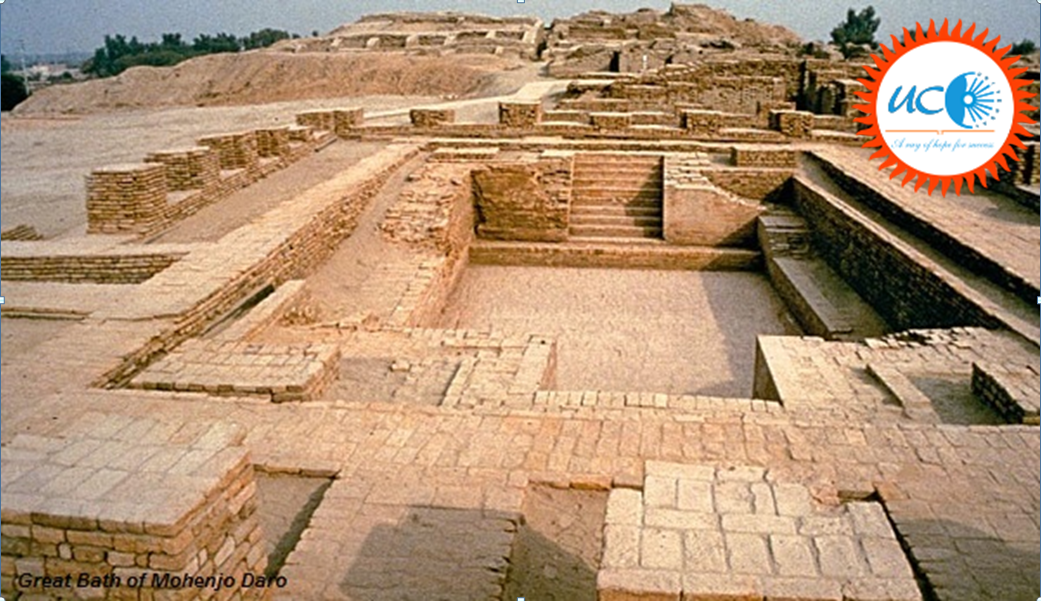Indus Valley Civilization
- IVC flourished around 2,500 BC,in contemporary Pakistan and Western India.
- IVC was home to the largest of the four ancient urban civilizationsof Mesopotamia, Egypt, India and China.
Features of IVC –
- On the valleys of Indus river.
- City life for the first time.
- Geographically, this civilization covered Sindh, Punjab, Baluchistan, Gujarat, Rajasthan and Western Uttar Pradesh. It extended from Sutkagengor (in Baluchistan) in the West to Alamgirpur (Western UP) in the East; and from Mandu (Jammu) in the North to Daimabad (Ahmednagar, Maharashtra) in the South. Some Indus Valley sites have also been found as far away as Afghanistan.
- Important cities – In India: Kalibangan (Rajasthan), Lothal, Dholavira, Rangpur, Surkotda (Gujarat), Banawali (Haryana), Ropar (Punjab). In Pakistan: Harappa (on river Ravi), Mohenjodaro (on Indus River in Sindh), Chanhudaro (in Sindh)
- Most cities had similar patterns. There were two parts: a citadel and the lower town.
- Most cities had a Great Bath.
- A large number of seals have been discovered.
- There were granaries, 2-storied houses made of burnt bricks, closed drainage lines, and wastewater management system, weights for measurements, toys, pots, etc.
- Animals were domesticated like sheep, goats, and pigs.
- Agriculture was the most important occupation. The first civilization to cultivate cotton.
- Crops were wheat, barley, cotton, ragi, dates, and peas.
- Metal products were produced including those with copper, bronze, tin, and lead. Gold and silver were also known. Iron was not known to them.
- Nature worship and phallus worship, no construction of temples
- Excellent pieces of red pottery. They also knew the use of Potter’s wheel with ease
- Harappans had trade with Mesopotamia(Sumeria), Central Asia, Persia, Afghanistan Makan (Oman), and Dilmun (Bahrain). Trade was through the barter system.
- Weights followed a binary system — 1, 2, 8, 16, 32 to 64, 160, 320, 640, 1600, 3200, and so on. The standardization and accuracy of weights and measures throughout the IVC were remarkable.
- Harappan seals are made up of Steatite (soft stone). Shape-generally Square and Rectangular seals with carved animal and inscription were used. Harappan seals are the greatest artistic creation and were used to mark ownership of property and in trade.
- Harappa was possibly ruled by a class of merchants.
Decline of IVC –
- After 2000 BC IVC declined & gradually faded away.
- Possible reasons – decline in soil fertility, depression in land, invasion of Aryans, decline of trade, Floods, Earthquake etc.
- Most acceptable reason is ecological imbalance.




